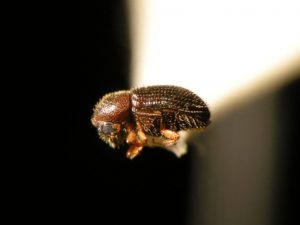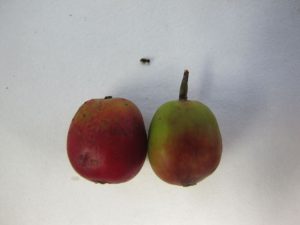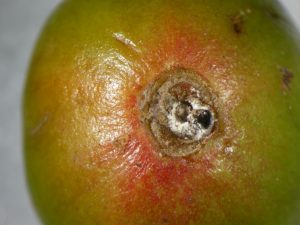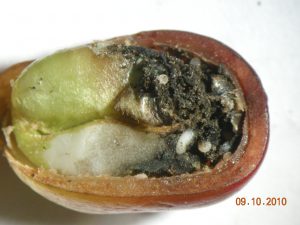Coffee Berry Borer Confirmed on Kaua`i
Posted on Sep 10, 2020 in MainNR20-13
Sept. 10, 2020
HONOLULU – The coffee berry borer (CBB), one of the most devastating pest of coffee plants, has been confirmed in a residential area in Kalaheo on Kaua`i. This is the first detection on Kaua`i of CBB which has been established on Hawai`i Island, Maui and O`ahu for several years.
On Sept. 3, 2020, a Kalaheo resident submitted suspected infested coffee berries to the Kaua`i Invasive Species Committee (KISC) which sent the samples to the Hawai`i Department of Agriculture (HDOA) and to the University of Hawai`i, College of Tropical Agriculture and Human Resources (UH-CTAHR). Samples were forwarded to HDOA’s Plant Pest Control Branch in Honolulu where an entomologist confirmed CBB on Sept. 4th. HDOA also collected additional samples from the resident’s property and yesterday began surveying neighboring residential properties. Additional surveys at other sites are being planned to determine the extent of the infestation.
Kauai’s major coffee grower, Kauai Coffee, was informed of the detection of CBB on the island and has been surveying their fields. So far, they have not detected any signs of CBB.
HDOA, UH-CTAHR and KISC are currently working on a collaborative response plan which includes integrated pest management practices that have helped to control the pest on other islands.
“While the extent of the infestation on Kaua`i is not known at this time, there is a strong coordinated effort between agencies and the coffee industry to try to contain and manage this pest,” said Phyllis Shimabukuro-Geiser, chairperson of the Hawai`i Board of Agriculture. “We also ask the Kaua`i community to be vigilant and report any signs of CBB in their backyard coffee plants.”
CBB was first detected in the state in Sept. 2010 in Kona and discovered in Ka`u in May 2011. It was found on O`ahu in December 2014 and on Maui in December 2016. It is still unknown how CBB first made its way to Hawai`i Island and how it has spread to other islands.
This small beetle bores into the coffee “cherry” to lay its eggs. The larvae feed on the coffee bean, reducing the yield and quality of the bean. Since its detection in Hawai`i, coffee growers have developed methods to manage the pest, which include using an organic pesticide and field sanitation. Some farms with good management practices have been able to keep infestation levels down significantly.
CBB, Hypothenemus hampei, is native to Central Africa and is also found in many coffee-growing regions of the world, including Central and South America. Hawai`i has strict importation rules requiring all imported green coffee beans for roasting and associated packing materials be fumigated prior to entering the State to ensure beans are free of pathogens and insect pests. These rules also subject coffee plants and propagative plant parts to strict quarantine requirements if imported to Hawai`i.
In addition, by rule, HDOA requires a permit issued by Plant Quarantine prior to transporting unroasted coffee beans, coffee plants and plant parts, used coffee bags and coffee harvesting equipment moving from an infested island to other islands within the state. The rule also requires inspection by HDOA Plant Quarantine inspectors, mitigation measures, and certain treatments prior to shipping. Inspectors will either attach a tag, label or stamp to indicate the shipment complies with all necessary requirements. For unroasted coffee beans, acceptable treatment protocols include fumigation, freezing and heat treatment.
To report possible CBB infestations on Kaua`i, call HDOA’s Plant Pest Control Branch at (808) 973-9525.
For more information on CBB in Hawai`i go to the HDOA CBB webpage at: https://hdoa.hawaii.gov/pi/ppc/cbbinfo/ and the UH-CTAHR webpage at: https://www.ctahr.hawaii.edu/site/CBB.aspx
###




